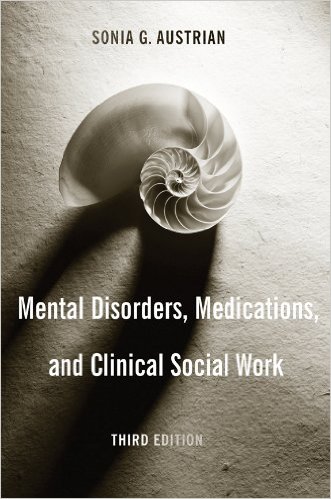Author: Sonia G. Austrian
Publisher: Columbia University Press – 308 pages
Book Review by: Sonu Chandiram
The United States spent $9,255 per person for health care in 2013, according to the World Health Organization. With a population about 315 million people then, the total cost was about $2.915 trillion. This amount was the largest among all countries. As a whole the U.S. spent 18.5 percent of its $15.76 trillion Gross Domestic Product on healthcare in that year. Research on more recent numbers will surely indicate that costs have gone even higher.
Mental health and physical health are closely interrelated, so it is difficult to assess the actual dollar cost of mental health care alone. Studies show that mental disorders are a leading cause of disability, which has a significant impact on the economy in terms of lost productivity as well as the economic burden on the public and private sector.
Preventive and curative mental health care are essential for raising the economic health level of the United States. One means of doing this is by conducting research to acquire new knowledge. on causes and treatments for various mental ailments. The other essential task is disseminating existing and new knowledge on preventing and curing them. This book contributes to the latter.
Sonia Austrian writes in the Preface that social workers in the U.S. are the largest group of mental health providers, and about 200,000 of them are clinically trained, more than the combined number in three other mental health professions: psychology, psychiatry and clinical nursing.
If you are taking courses in, or are involved in any way in: beginning and advanced social work practice, intervention in mental health situations, or psychopathology and maladaptation, this is a good book for you.
Why was this book written? Let’s quote Austrian: “This book was written to provide students and beginning social workers with specific information about an area of clinical social work that intersects psychiatry, assessment, and intervention with people who have mental disorders.” Unlike other works written by psychiatrists and psychologists, this is a unique book that certainly fills the specific void of knowledge that social workers have, in helping their clients.
Besides teaching subjects relating to assessment, epidemiology, and etiology of common mental disorders, Sonia Austrian is a social worker as well. She suggests that internal and external environmental factors contributing to the development of disorders be analyzed. She also stresses that in discussing interventional options for clients with disorders, the social worker get family members involved.
To give you an overview of the subjects discussed in this book, below is its table of contents:
- Introduction
- Anxiety Disorders
- Mood Disorders
- Somatoform and Factitious Disorders
- Dissociative Disorders
- Schizophrenia
- Substance-Related Disorders
- Eating Disorders
- Personality Disorders
- Delirium, Dementia, and Amnestic and Other Cognitive Disorders
- The Use of Psychodiagnostic and Psycheducational
- Psychotropic Medications
- Epilogue
- Glossary
This is an excellent, practical how-to guide in treating people with mental disorders from a social work perspective, by taking into account environmental factors, working with family members to gain better understanding, and providing more effective treatment options.
Author:
Sonia G. Austrian is the author of Development Theories Through the Life Cycle. She is associate professor in the department of public health and of psychiatry at Weill Medical College of Cornell University, adjunct professor at Columbia University School of Social Work, and director of the Employment Assistance Program Consortium.







